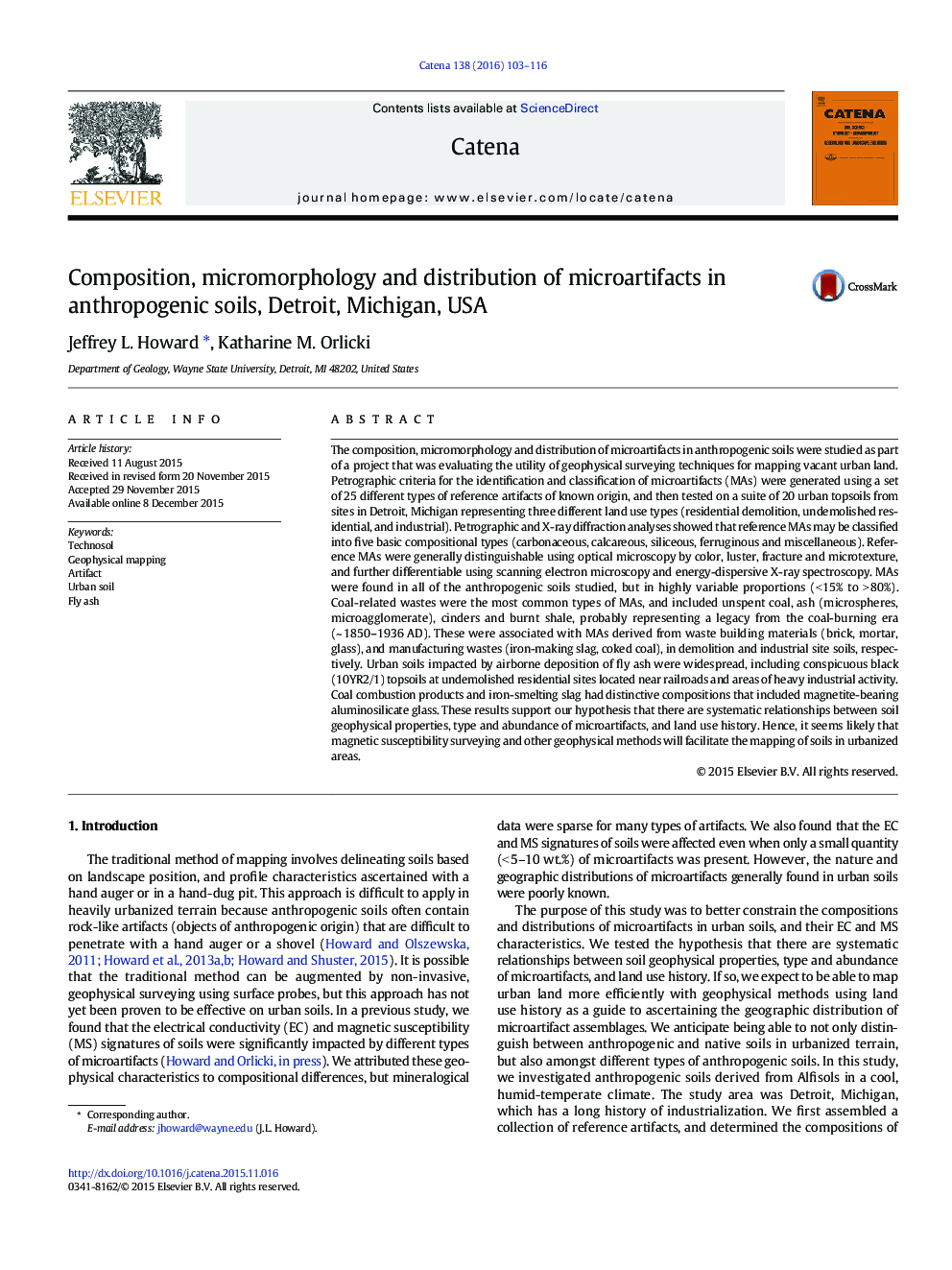| Article ID | Journal | Published Year | Pages | File Type |
|---|---|---|---|---|
| 4570988 | CATENA | 2016 | 14 Pages |
•Microartifacts are widespread in urban soils and vary with land use history.•Most microartifacts are distinguishable by optical microscopy.•Artifact composition significantly affects geophysical properties.•Microartifacts facilitate geophysical mapping of soils in urbanized areas.
The composition, micromorphology and distribution of microartifacts in anthropogenic soils were studied as part of a project that was evaluating the utility of geophysical surveying techniques for mapping vacant urban land. Petrographic criteria for the identification and classification of microartifacts (MAs) were generated using a set of 25 different types of reference artifacts of known origin, and then tested on a suite of 20 urban topsoils from sites in Detroit, Michigan representing three different land use types (residential demolition, undemolished residential, and industrial). Petrographic and X-ray diffraction analyses showed that reference MAs may be classified into five basic compositional types (carbonaceous, calcareous, siliceous, ferruginous and miscellaneous). Reference MAs were generally distinguishable using optical microscopy by color, luster, fracture and microtexture, and further differentiable using scanning electron microscopy and energy-dispersive X-ray spectroscopy. MAs were found in all of the anthropogenic soils studied, but in highly variable proportions (< 15% to > 80%). Coal-related wastes were the most common types of MAs, and included unspent coal, ash (microspheres, microagglomerate), cinders and burnt shale, probably representing a legacy from the coal-burning era (~ 1850–1936 AD). These were associated with MAs derived from waste building materials (brick, mortar, glass), and manufacturing wastes (iron-making slag, coked coal), in demolition and industrial site soils, respectively. Urban soils impacted by airborne deposition of fly ash were widespread, including conspicuous black (10YR2/1) topsoils at undemolished residential sites located near railroads and areas of heavy industrial activity. Coal combustion products and iron-smelting slag had distinctive compositions that included magnetite-bearing aluminosilicate glass. These results support our hypothesis that there are systematic relationships between soil geophysical properties, type and abundance of microartifacts, and land use history. Hence, it seems likely that magnetic susceptibility surveying and other geophysical methods will facilitate the mapping of soils in urbanized areas.
Graphical abstractFigure optionsDownload full-size imageDownload as PowerPoint slide
